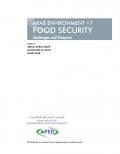In recent years there has been increasing support for establishing successful models of REDD+ and low emissions development (LED) efforts at a jurisdictional scale. Jurisdictional efforts were designed to overcome the shortcomings of project-based approaches by working across land-use types and with multiple stakeholders to create models for national implementation. This study analyzes some of the most advanced REDD+/LED initiatives worldwide - including a critical look at the success and challenges to date - to understand what is needed to succeed going forward. Eight diverse jurisdictions were studied: Acre, Brazil; Berau, Indonesia; Ghana’s cocoa ecoregion; Mai Ndombe, Democratic Republic of the Congo (DRC); San Martín, Peru; São Félix do Xingu, Brazil; the Terai Arc, Nepal; and the Yucatan Peninsula, Mexico.

This paper presents a framework for a green economy transition in tourism destinations. While the literature has suggested many models to guide sustainable tourism, very few studies have investigated the green economy in a tourism context. The main distinguishing factor between the green economy and sustainable development may be described as the acknowledgement of climate change as an existential threat to society and the aim to avoid policy, management and governance fragmentation (which has been common for environmental issues) by addressing greenhouse gas emissions, resource efficiency and social inclusiveness holistically at the economic level. This study frames the green economy concept from a tourism perspective and presents a model for translating the green economy concept into a tourism stakeholder engagement process. The model was tested in the case study of Bali, Indonesia, involving research methods such as visioning group techniques with tourism stakeholders, tourism economy and employment forecasting, resource efficiency estimates as well as resident and visitor surveys.
The world today is facing the worst economic and environmental crises in generations. Hence, we need policies that can stimulate recovery and at the same time reach the sustainability. Many organisations and experts have advocated for a 'green recovery', where the economic crisis should be grasped by governments as an opportunity to reduce carbon dependency and put economies on a path of 'green growth' by using green stimulus packages. Many papers and international reports advocate that the renewable energy sector is an essential step in the path of green recovery. The main aim of this paper is to review a selection of responses to the double crisis by international institutions and to focus on the achievements made in the renewable energy sector.
Copenhagen is widely recognised as a leader in the global green economy. The Copenhagen region accounts for almost 40% of Denmark’s output and has enjoyed long-term stable growth. At a national level, Danish GDP per capita is ranked among the top 10 countries in the world. At the same time, the city’s growth has been delivered while improving environmental performance and transitioning to a low-carbon economy.
This report, which we have produced in partnership with the City of Copenhagen, shows that the city continues to build on its pioneering success. Copenhagen has set itself the ambitious target to be carbon neutral by 2025, and the report looks at the challenges and opportunities involved in delivering this transformative agenda.
Featuring a wealth of new research findings, the report shows how Copenhagen’s success is underpinned by a strong combination of the city’s green growth drivers. A number of these drivers rank among the best in Europe and the world, including the city’s compact urban form, strong innovation, high skills and employment, low carbon emissions, and improved environmental quality.
